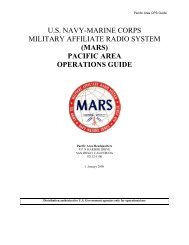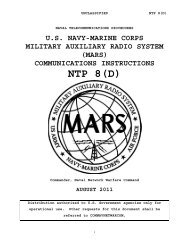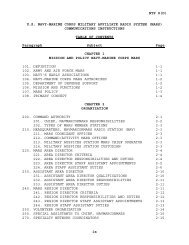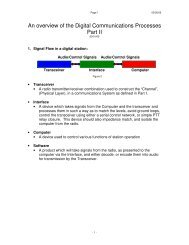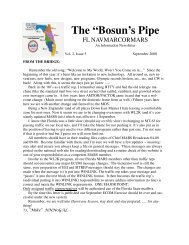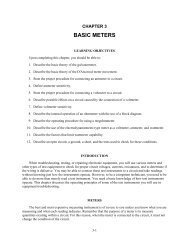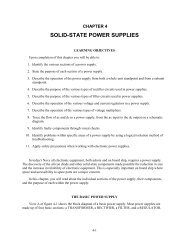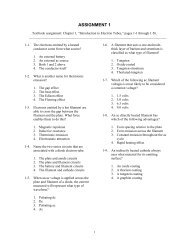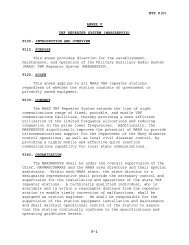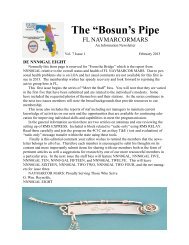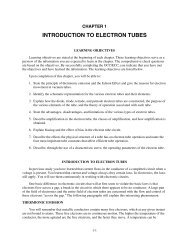NEETS Module 8, Chapter 1
NEETS Module 8, Chapter 1
NEETS Module 8, Chapter 1
You also want an ePaper? Increase the reach of your titles
YUMPU automatically turns print PDFs into web optimized ePapers that Google loves.
A transistor amplifier can be configured to act as a phase splitter. One method of doing this is shownin figure 1-27.Figure 1-27.—Single-stage transistor phase splitter.C1 is the input signal coupling capacitor and couples the input signal to the base of Q1. R1 developsthe input signal. R2 and R3 develop the output signals. R2 and R3 are equal resistances to provide equalamplitude output signals. C2 and C3 couple the output signals to the next stage. R4 is used to provideproper bias for the base of Q1.This phase splitter is actually a single transistor combining the qualities of the common-emitter andcommon-collector configurations. The output signals are equal in amplitude of the input signal, but are180º out of phase from each other.If the output signals must be larger in amplitude than the input signal, a circuit such as that shown infigure 1-28 will be used.Figure 1-28 shows a two-stage phase splitter. C1 couples the input signal to the base of Q1. R1develops the input signal and provides bias for the base of Q1. R2 provides bias and temperature stabilityfor Q1. C2 decouples signals from the emitter of Q1. R3 develops the output signal of Q1. Since Q1 isconfigured as a common-emitter amplifier, the output signal of Q1 is 180º out of phase with the inputsignal and larger in amplitude. C3 couples this output signal to the next stage through R4. R4 allows onlya small portion of this output signal to be applied to the base of Q2. R5 develops the input signal andprovides bias for the base of Q2. R6 is used for bias and temperature stability for Q2. C4 decouplessignals from the emitter of Q2. R7 develops the output signal from Q2. Q2 is configured as acommon-emitter amplifier, so the output signal is 180º out of phase with the input signal to Q2 (outputsignal from Q1). The input signal to Q2 is 180º out of phase with the original input signal, so the outputfrom Q2 is in phase with the original input signal. C5 couples this output signal to the next stage. So thecircuitry shown provides two output signals that are 180º out of phase with each other. The output signalsare equal in amplitude with each other but larger than the input signal.1-28



